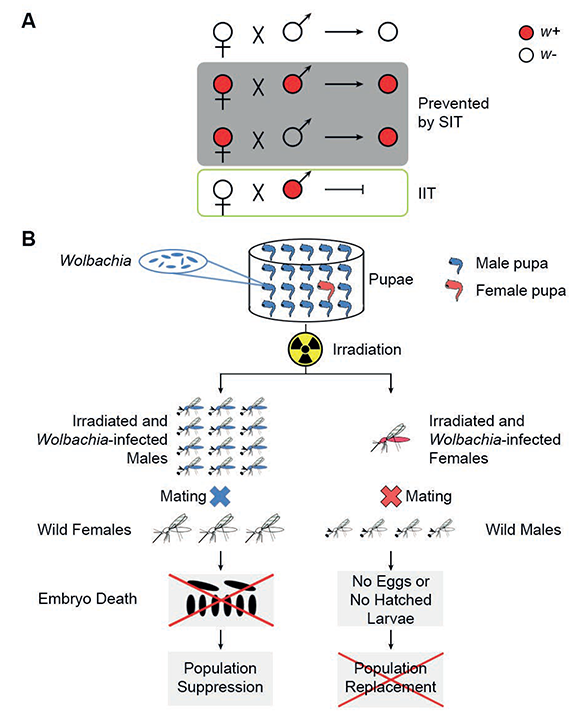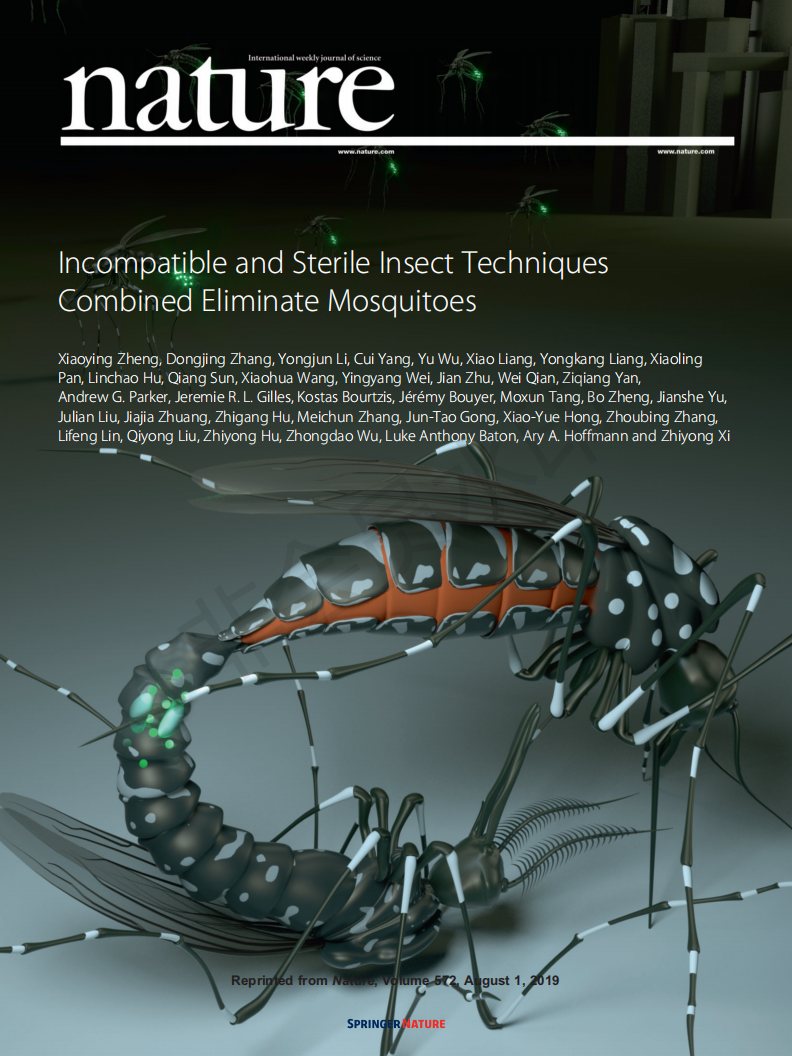Sterile insect technique (SIT)
SIT, in which artificially reared radiation-sterilized males are released into the field to mate with wild females—thereby preventing them from producing viable offspring—has successfully suppressed populations of several insect pests of agricultural and veterinary importance. However, despite various trials, SIT has not been widely used against mosquitoes because of the difficulty of irradiating males without reducing their mating competitiveness and survival.
Incompatible insect technique (IIT)
IIT which uses sterilization caused by the maternally inherited endosymbiotic bacteria Wolbachia—is a promising alternative. An advantage of IIT is that Wolbachia-based sterilization has little or no effect on male mating competitiveness and survival. However, any Wolbavhia-infected females contaminated in the released females may cause population replacement, preventing further population suppression.
Combined IIT-SIT
In combined IIT-SIT (see the figure below), individuals destined for field release will be first subjected to low-dose radiation, which would completely sterilize any contaminant females without affecting the incompatibility or quality of the simultaneously irradiated males. We have successfully completed a pilot field trial in two islands in South China and demonstrated proof of concept that combined IIT-SIT can result in near-elimination of the local primary dengue vector, A. albopictus, for over two years (Zheng, et al. 2019.
Nature). These results, together with the success in other countries, lead to the conclusion by the
World Health Organization that IIT-SIT has potential for the long-term control of Ae. aegypti and Ae. albopictus mosquitoes.

- Baton, et al. 2021.
Book chapter in Area-Wide Integrated Pest Management.




